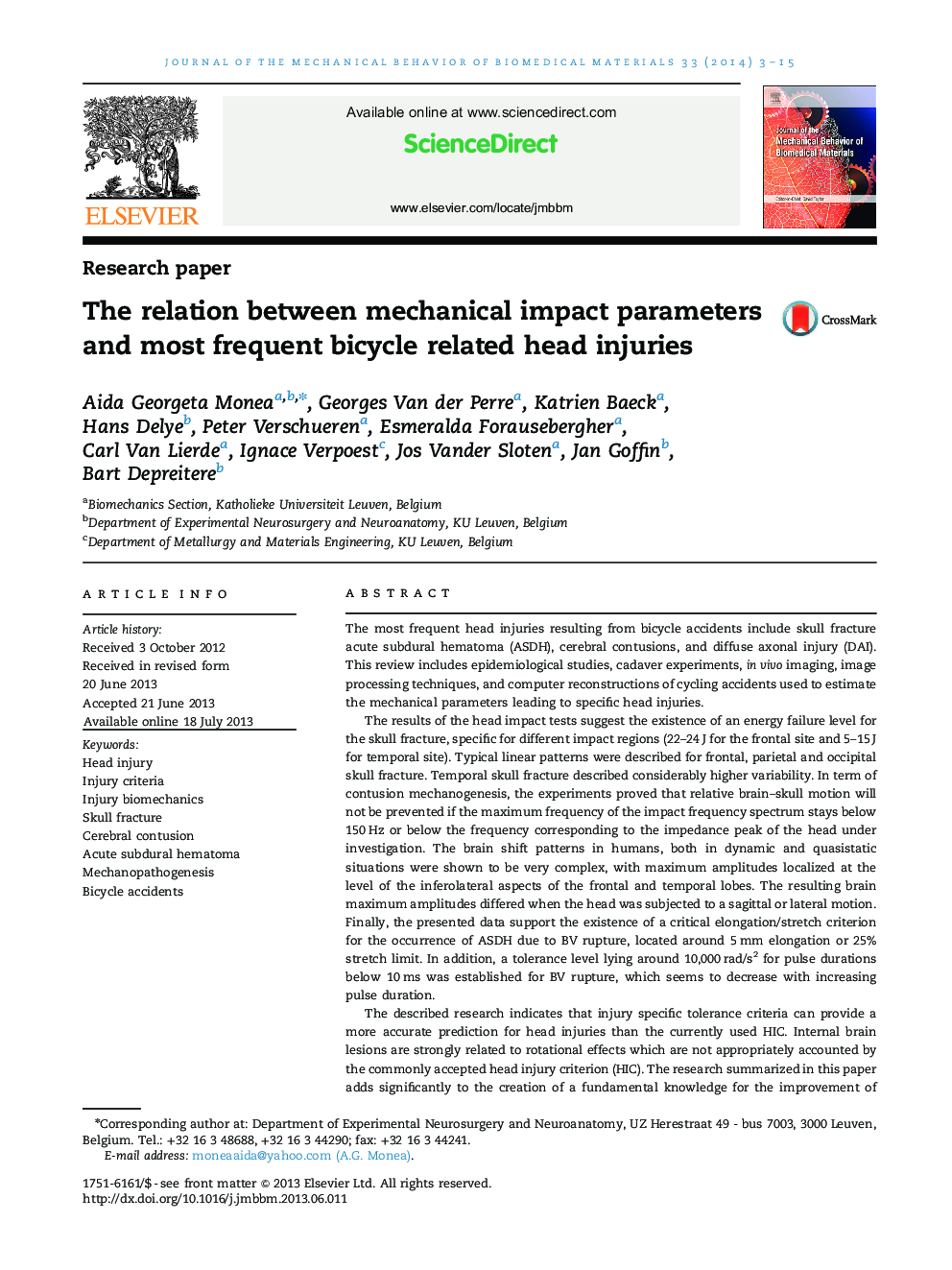| کد مقاله | کد نشریه | سال انتشار | مقاله انگلیسی | نسخه تمام متن |
|---|---|---|---|---|
| 810784 | 1469112 | 2014 | 13 صفحه PDF | دانلود رایگان |
• A potential energy failure level for the frontal and temporal skull has been established.
• Higher brain displacement amplitudes have been described for the frontal and temporal lobes.
• Peak brain displacement amplitudes of up to 1 cm were calculated in quasistatic situations.
• Whole brain displacements of 2–3 mm have been measured after occipital impacts.
• A tolerance level around 10,000 rad/s2 for pulse durations ≤10 ms was established for BV rupture.
The most frequent head injuries resulting from bicycle accidents include skull fracture acute subdural hematoma (ASDH), cerebral contusions, and diffuse axonal injury (DAI). This review includes epidemiological studies, cadaver experiments, in vivo imaging, image processing techniques, and computer reconstructions of cycling accidents used to estimate the mechanical parameters leading to specific head injuries.The results of the head impact tests suggest the existence of an energy failure level for the skull fracture, specific for different impact regions (22–24 J for the frontal site and 5–15 J for temporal site). Typical linear patterns were described for frontal, parietal and occipital skull fracture. Temporal skull fracture described considerably higher variability. In term of contusion mechanogenesis, the experiments proved that relative brain–skull motion will not be prevented if the maximum frequency of the impact frequency spectrum stays below 150 Hz or below the frequency corresponding to the impedance peak of the head under investigation. The brain shift patterns in humans, both in dynamic and quasistatic situations were shown to be very complex, with maximum amplitudes localized at the level of the inferolateral aspects of the frontal and temporal lobes. The resulting brain maximum amplitudes differed when the head was subjected to a sagittal or lateral motion. Finally, the presented data support the existence of a critical elongation/stretch criterion for the occurrence of ASDH due to BV rupture, located around 5 mm elongation or 25% stretch limit. In addition, a tolerance level lying around 10,000 rad/s2 for pulse durations below 10 ms was established for BV rupture, which seems to decrease with increasing pulse duration.The described research indicates that injury specific tolerance criteria can provide a more accurate prediction for head injuries than the currently used HIC. Internal brain lesions are strongly related to rotational effects which are not appropriately accounted by the commonly accepted head injury criterion (HIC). The research summarized in this paper adds significantly to the creation of a fundamental knowledge for the improvement of bicycle helmets as well as other head protective measures. The described investigations and experimental results are of crucial importance also for forensic research.
Figure optionsDownload high-quality image (142 K)Download as PowerPoint slide
Journal: Journal of the Mechanical Behavior of Biomedical Materials - Volume 33, May 2014, Pages 3–15
